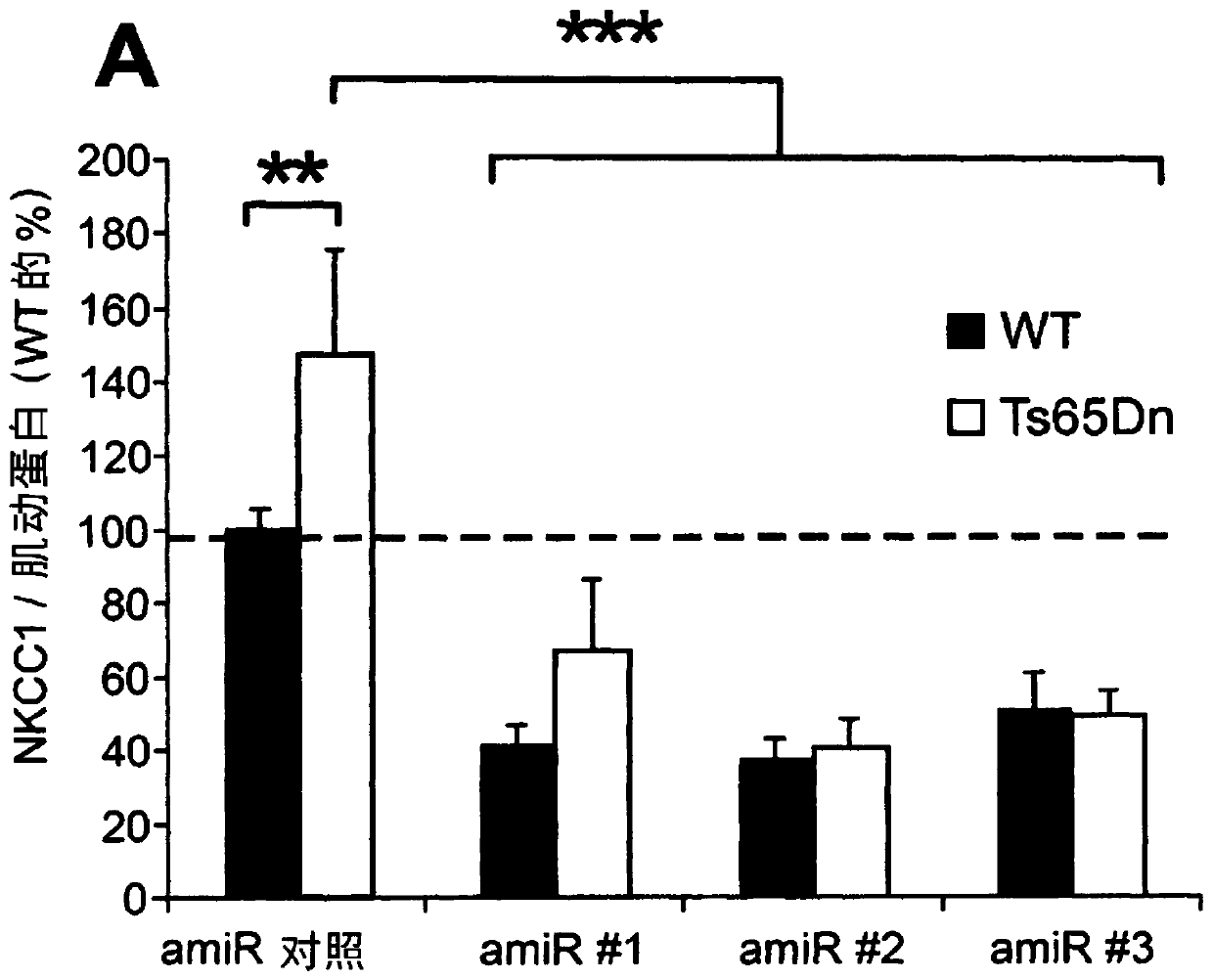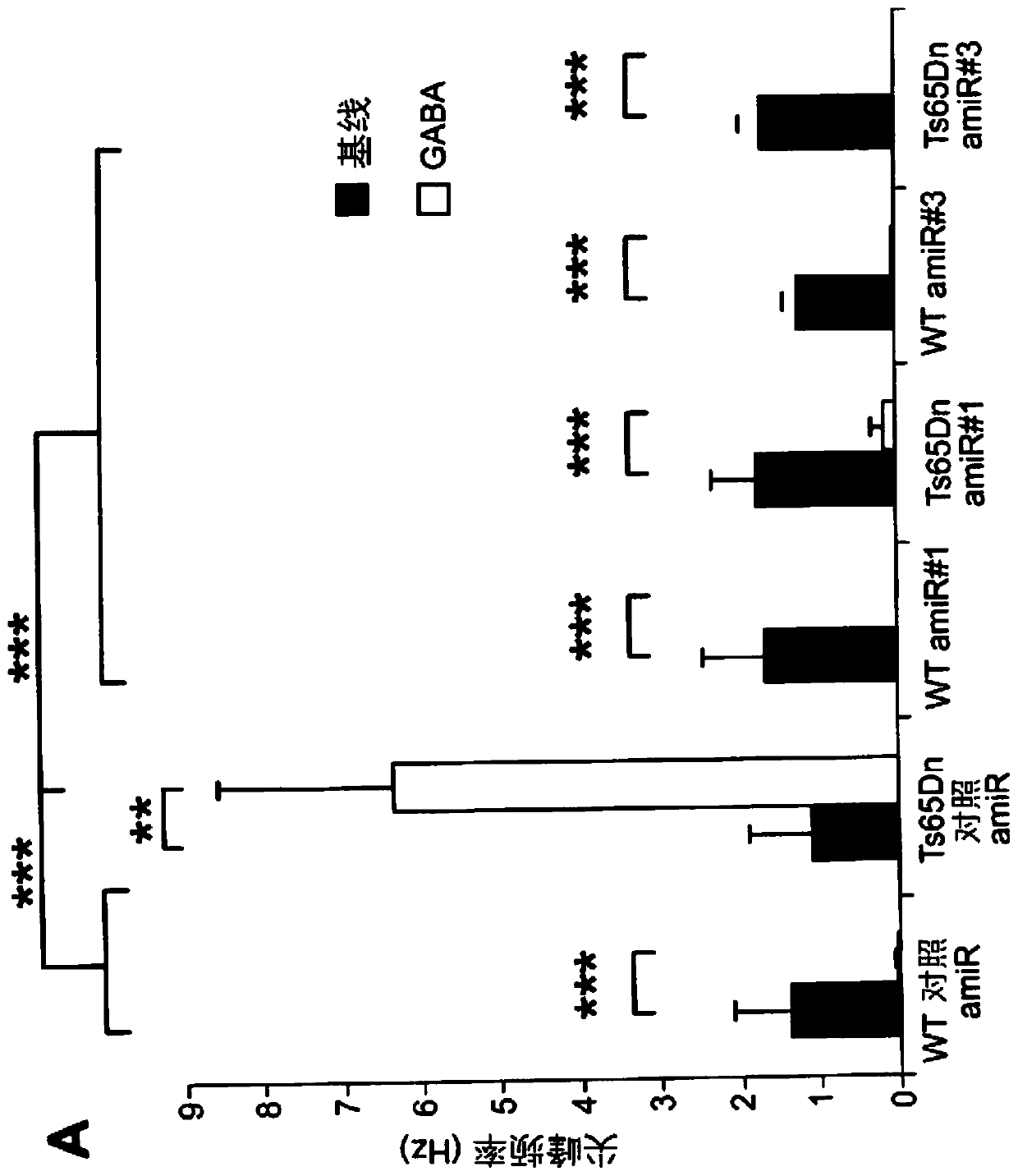A vector and a pharmaceutical composition for reducing the expression of nkcc1 in a subject in need thereof, as well as a related therapeutic treatment method
A treatment method and subject technology, applied in the direction of introducing foreign genetic material using vectors, biochemical equipment and methods, pharmaceutical formulations, etc., can solve problems such as undesired excessive diuresis, impaired treatment compliance, ototoxicity, etc.
- Summary
- Abstract
- Description
- Claims
- Application Information
AI Technical Summary
Problems solved by technology
Method used
Image
Examples
Embodiment Construction
[0004] The inventors have developed an RNA interference (RNAi) strategy based on reducing NKCC1 expression using an artificial microRNA (amiR). By replacing the 21-22 nucleotide antisense of a naturally occurring primary microRNA (pri-miRNA) scaffold (such as mouse microRNA155; GenBank accession number: NR_029565.1) with an antisense targeting sequence against hNKCC1 Artificial microRNAs are constructed using a sense targeting sequence (the so-called guide strand). In particular, the inventors have designed a system that achieves neuron-specific expression of a specific amiR against NKCC1 by using the human synaptophysin promoter to drive transgene expression.
[0005] Therefore, in a first aspect, the present invention relates to a vector for use in a method of treatment for reducing the expression of NKCC1 in a subject in need thereof, the vector comprising a polynucleotide encoding an amiR capable of reducing the expression of NKCC1, wherein the amiR comprises a polynucleot...
PUM
 Login to View More
Login to View More Abstract
Description
Claims
Application Information
 Login to View More
Login to View More - R&D
- Intellectual Property
- Life Sciences
- Materials
- Tech Scout
- Unparalleled Data Quality
- Higher Quality Content
- 60% Fewer Hallucinations
Browse by: Latest US Patents, China's latest patents, Technical Efficacy Thesaurus, Application Domain, Technology Topic, Popular Technical Reports.
© 2025 PatSnap. All rights reserved.Legal|Privacy policy|Modern Slavery Act Transparency Statement|Sitemap|About US| Contact US: help@patsnap.com



